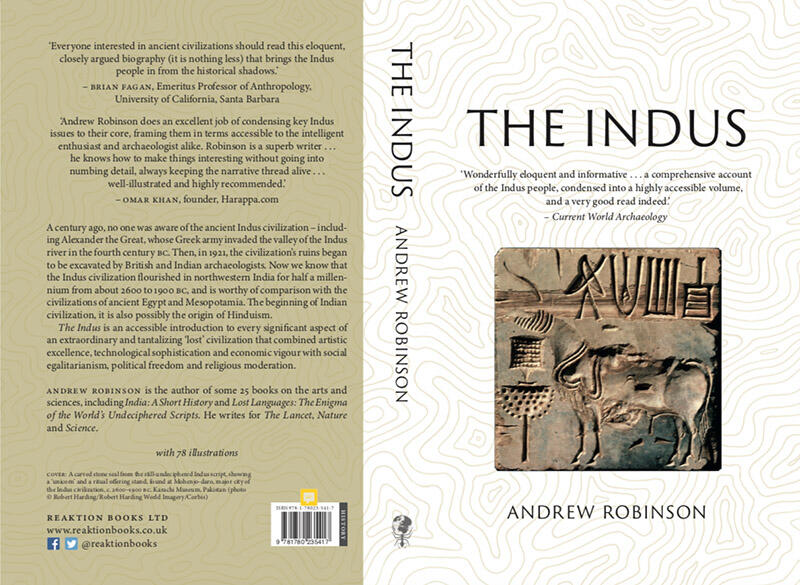BOOK REVIEW
There are almost no concise, up-to-date accounts of the ancient Indus civilization, locating the latest facts and opinions within a larger intellectual context. Has the Indus script been deciphered? What can we say about the relationship of ancient Indus traditions and modern Hinduism? How did Indus society compare to contemporary Bronze Age Egypt and Mesopotamia? Why do so many questions remain open and so contentious?
Andrew Robinson does an excellent job of condensing key Indus issues to their core, framing them in terms accessible to the intelligent enthusiast and archaeologist alike. Robinson is a superb writer. With numerous other books on ancient civilizations to his credit, he knows how to make things interesting without going into numbing detail, always keeping the narrative thread alive. His briskly summarizes the discovery of the civilization and its architecture, and uses the chapter on Indus crafts to “demonstrate, perhaps more than the Indus buildings and engineering, just how sophisticated this ancient civilization was.”
There is a solid chapter on Indus agriculture and animal husbandry, often overlooked. He contrasts sharply what we know about Indus society with ancient Mesopotamia, and offers a nice summary of what little we can surmise about Indus religion from objects like the "yogic" or "fig deity" seals, miniature doorways to grand speculations on the Indus belief system.
My only quibble with the well-illustrated and otherwise highly recommended book is that the photographs are in black and white; this diminishes an important dimension of Indus reality, for there can be little doubt from objects and the many traces of paint on them that it was a very colorful civilization indeed.
Particularly noteworthy is his chapter on the Indus writing system, where he summarizes and dispenses with numerous approaches and “decipherments,” and then turns to the few with wider scholarly appeal, like those of Asko Parpola and Iravatham Mahadevan which he presents as tantalizing yet far from proven.
His chapter “Indus Origins of Hinduism?” also stands out. He shows how this complex, multi-faceted religion now referred to under one word actually brought together many different strands and beliefs over time, so that while there seem to be real affinities between Hindu gods and practices today and Indus figures and monuments like the Great Bath, relating contemporary to spiritual practices that prevailed more than four thousand years ago is fraught both with peril and possibility. Perhaps this is what makes the Indus civilization so fascinating – we know so much less about it than we do about ancient Egypt and Mesopotamia, yet it also seems much more familiar, with so many of its artifacts still part of life in the subcontinent today.
Omar Khan, February 8, 2016
Another book review.

